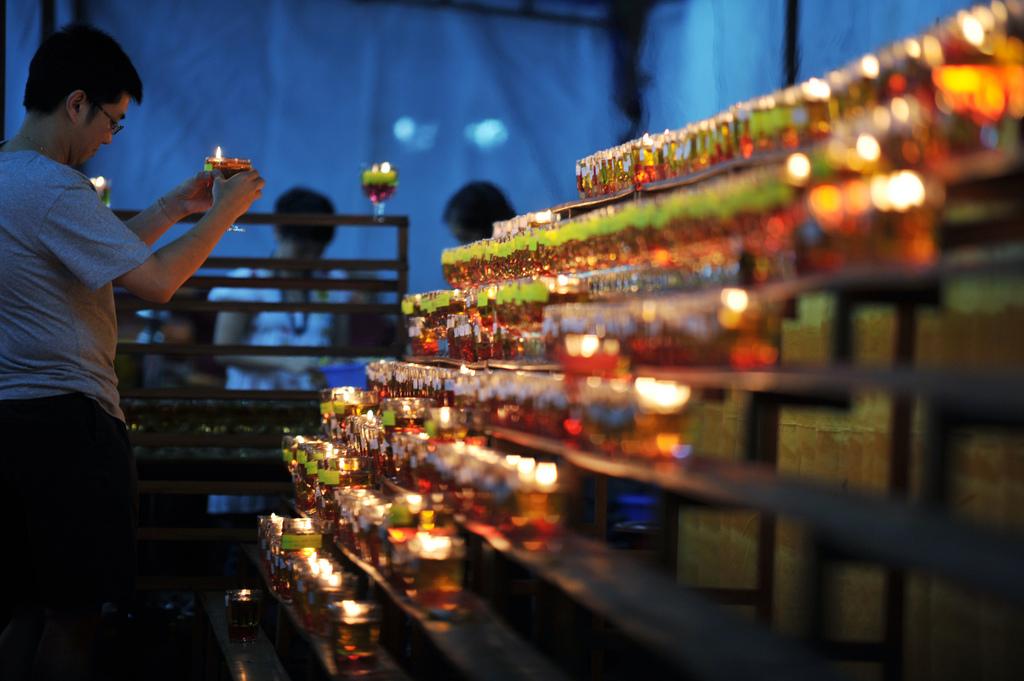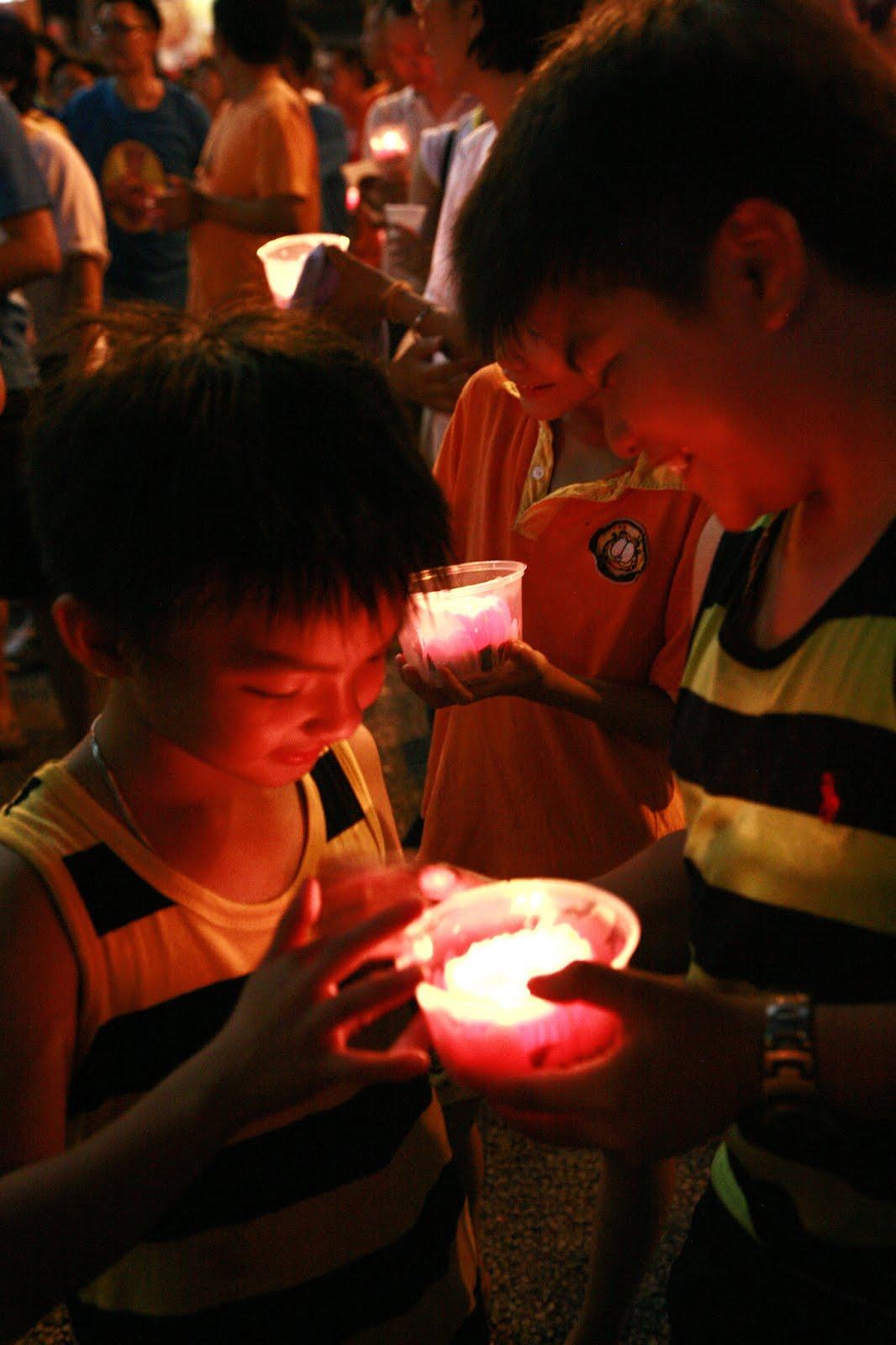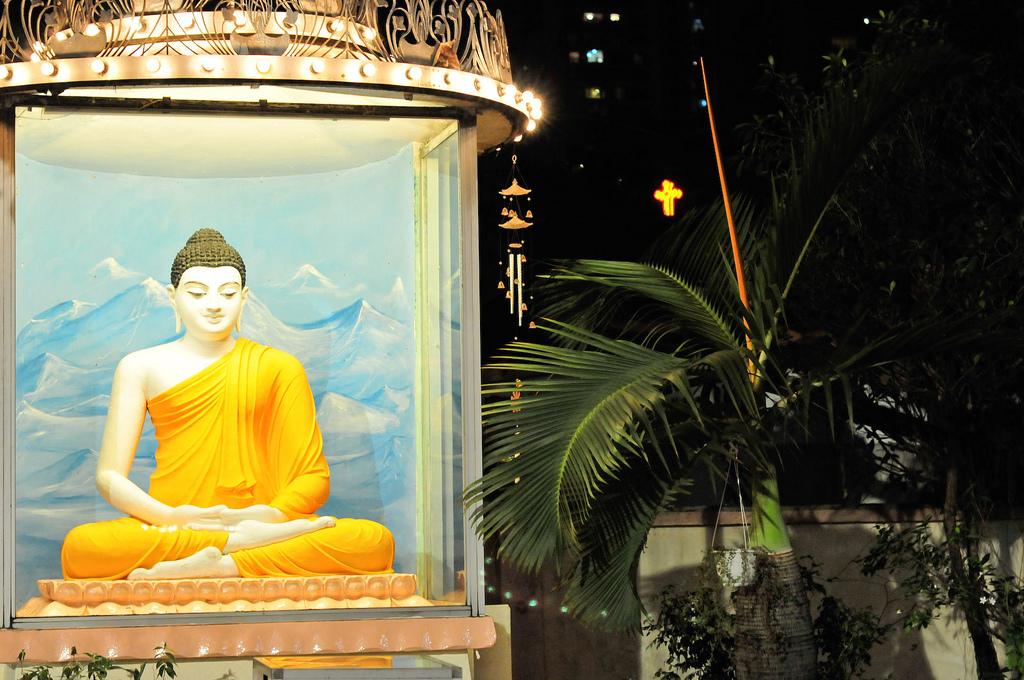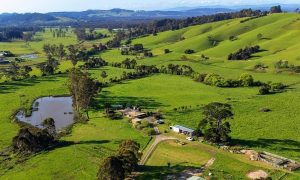On 21 May 2016, Malaysian Buddhists will celebrate Wesak Day, which celebrates the life and death of Gautama Buddha. Here’s what you need to know about the traditions of the festival and where to see the events.
To Buddhists, Wesak Day – also known as Buddha Purnima or Buddha Day – is more than just another religious public holiday in that it celebrates three major events. In the Buddhist calendar, Wesak day marks not only the birthday of Gautama Buddha, but the day he reached enlightenment and his passing away, as he departed from the human world via the achievement of Nirvana.
Although festivals have been held for centuries as a tradition, the decision to celebrate Vesākha as Buddha’s birthday was formalized at the very first Conference of the World Fellowship of Buddhists in Sri Lanka in 1950.
Since Buddhism is one of the oldest religions in the world and it has been assimilated into countless foreign cultures, Wesak Day is celebrated across the globe. We’re taking a look at how Wesak Day is celebrated specifically in Malaysia.
The story of Wesak
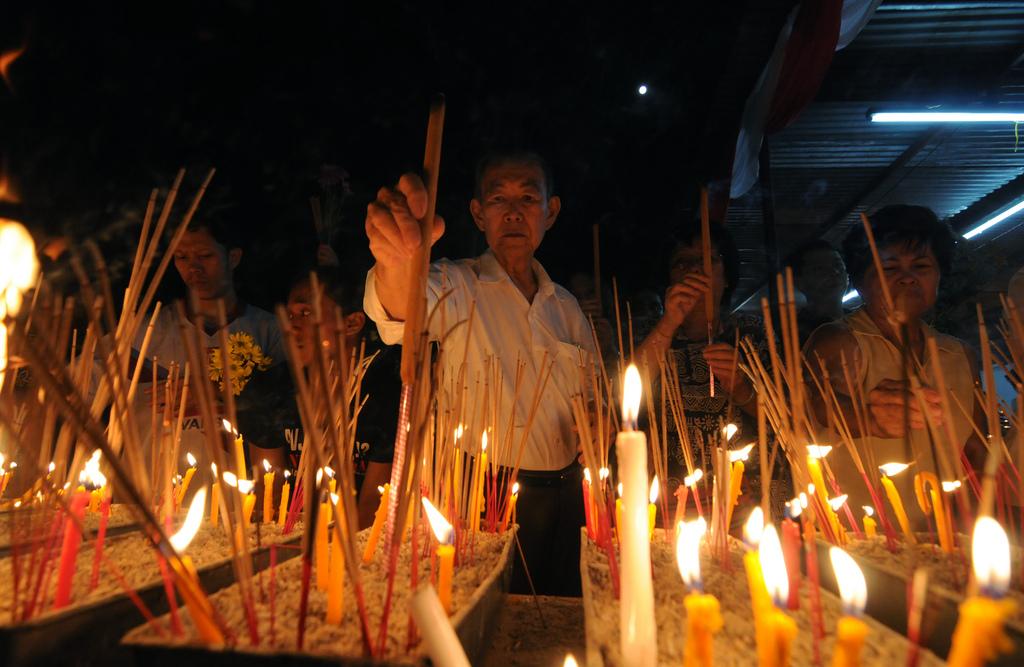
The exact date of Wesak or Vesak is based on the Asian luni-solar calendars and is primarily celebrated in Vaisakha month of the Buddhist calendar and the Hindu calendar; hence the name Vesak, which is the Sanskrit name in Mahayana Buddhist traditions.
The date varies from year to year and the holiday is observed traditionally by devout Buddhists on different days due to the difference in local lunar observance. Various lunar calendars are used in different traditions to determine the date.
Those who celebrate Wesak Day in Korea, Japan and China usually mark the celebration on 8th of April each year. May 2007 had two full moon days so some countries like Sri Lanka, Cambodia, and Malaysia, celebrated Wesak on the 1st while others, like Thailand and Singapore, celebrated the event on the 31st of May. In 2014, the local full moon was noticed on May 13 in Myanmar, Singapore and Thailand while it was seen on May 15 in Indonesia.
The ceremony and celebration of Wesak
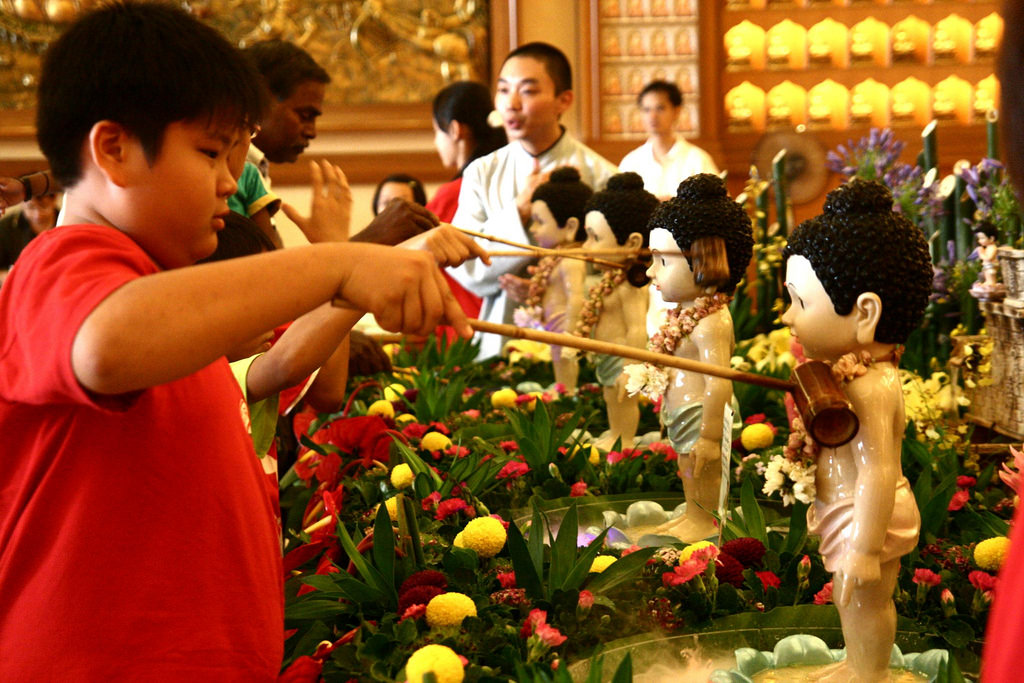
Wesak celebrations usually include ‘bathing’ the Buddha, charity, abstinence from meat, consumption of vegetarian food, meditation, and observing the Eight Precepts, which requires devotees and followers to refrain from destroying living creatures, stealing, sexual activity, incorrect speech, intoxicating substances, eating at the forbidden time, earthly pleasures, and lying on a high or luxurious sleeping place.
Every year in Malaysia, the Wesak ceremony begins at dawn when Buddhist devotees and followers gather alike at various Buddhist temples nationwide to meditate on the Eight Precepts by hoisting the Buddhist flag and singing hymns in praise of the holy triple gem: The Buddha, The Dharma (his teachings), and The Sangha (his disciples). Monks in saffron-colored robes will chant the sutras in unison.
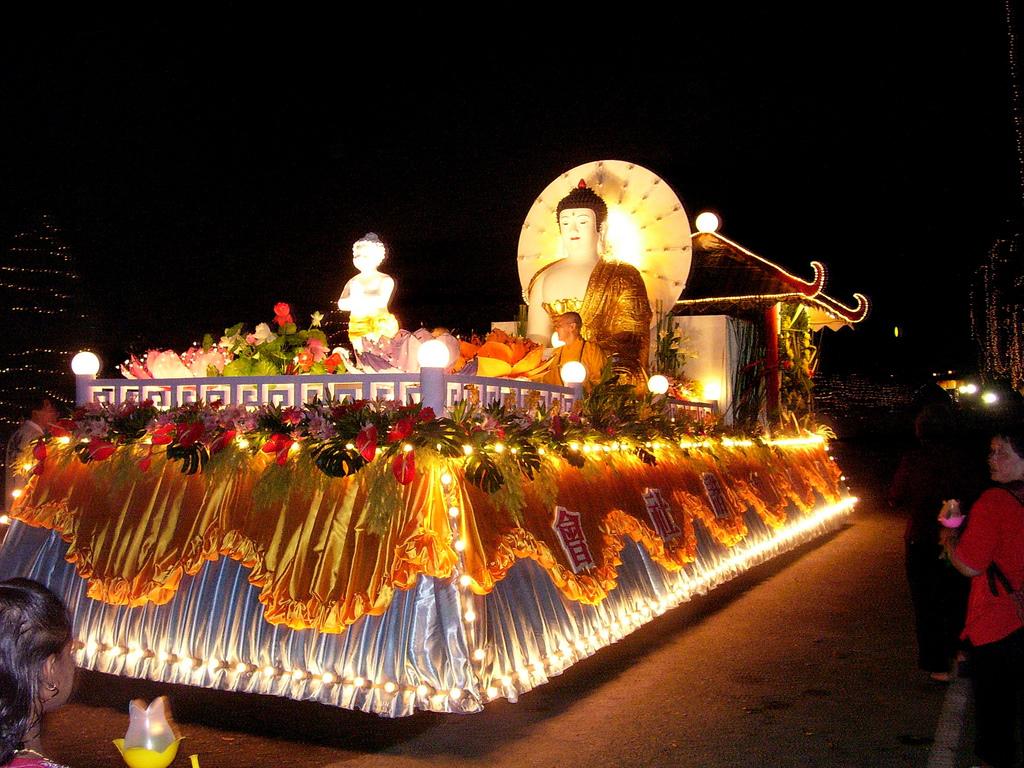
The assembly will then be followed by the highlight of the celebration; a candle procession and at the same time, simple and symbolic offerings of flowers, candles and joss-sticks are made to remind devotees that life is subject to decay and destruction. Donations and food for the needy are also given.
At the Malaysian Buddhist Association, ardent devotees queued patiently to take turns to bathe the Buddha statue, which is a special ritual that represents the purification and cleansing of a practitioner’s soul of bad karma. At the end of the prayers, all of them came together to dine on simple offerings of vegetarian food and drinks.
On the 5th of May 2012, the Wesak Day Parade in Malaysia took place at the Buddhist Temple Maha Vihara in Brickfields around 7 p.m. The parade follows the same route almost every year; passing by Jalan Raja Chulan, Jalan Sultan Ismail and Jalan Bukit Bintang before the last decorated floats finally arrives around 11 p.m. to Brickfields again. If you want to witness the parade, make sure you are in the Brickfields area ahead of time as the streets would be quite congested before the parade departs.
The customs of Wesak
Wesak day is also when Buddists offer donations in cash and kind to the needy. On this day, followers of the religion make extra effort to bring joy to the aged, unfortunate, handicapped, and the sick via distributions of donations to various charity organisations and homes throughout the country.
This is done as a way for expressing great joy and happiness through selfless acts that benefit the public at large.
There’s also a special effort made to refrain from taking any life. Therefore, devotees are encouraged to eat only vegetarian food on Wesak Day and share that food with others who visit the temple to pay their respects and prays to Buddha.
Thousands of birds, insect, and animals are released as a symbol of liberation by granting freedom to those who were imprisoned, captured or tortured against their will.
With renewed determination, some devotees will even wear a white garb and spend their day observing the Eight Precepts in temples.
Usually, devout Buddishts make daily affirmations to observe the Five Precepts and lead a noble life, but on special days such as when there is a new moon or full moon, they observe Eight Precepts in order to train themselves in morality, simplicity, and humility.
Some temples may display a small statue of Buddha in front of the alter along with a basin filled with water and flowers, which devotees can pour over the statue. This is a symbolic representation of cleansing as well as a re-enactment of the events following the birth of Buddha when spirits and devas bestowed heavenly offerings upon him.
On this day, devotees are also expected to listen to talks delivered by monks. The monks will recite verses uttered by Buddha around 25 centuries ago to invoke happiness and peace for the people and the government. As per the teachings of Buddha, monks remind devotees to live in harmony with all people respecting the faiths and beliefs of others. The belief is that the true way to sincerely pay homage to Buddha and his teachings is to live a noble life, develop their minds, practice loving kindness and bring peace and harmony to mankind.
The significance of Wesak
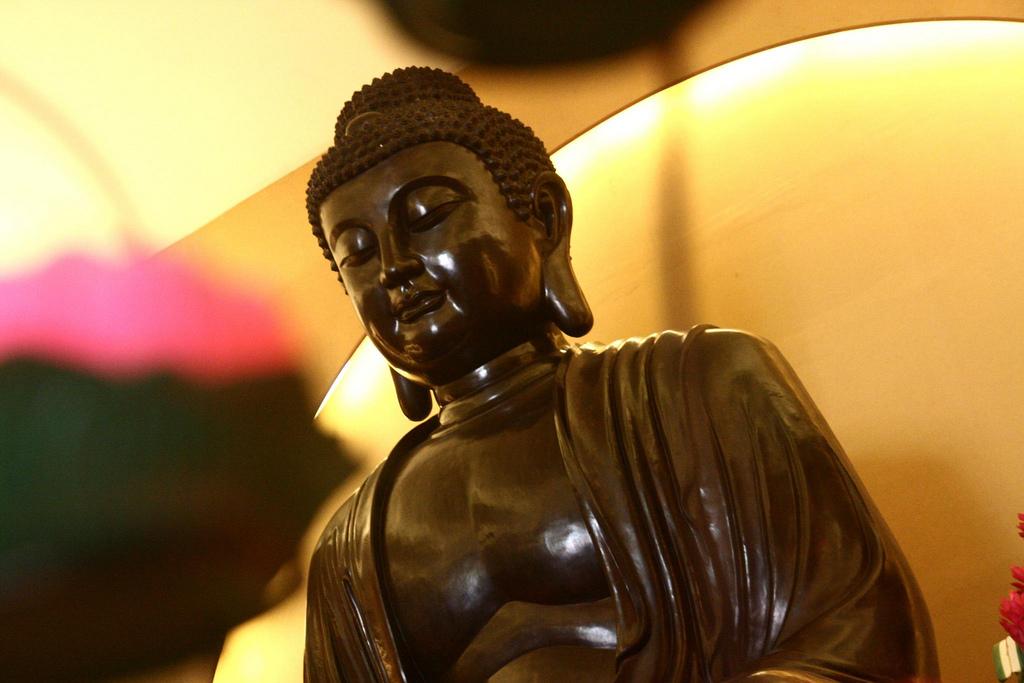
The significance of Wesak can be traced back to more than 2500 years ago, when the wisdom and light of the Buddha and his Enlightenment radiated under the historic Bodhi Tree at Buddha Gaya in the district of Bihar in Northern India. This illumated the way for mankind to go from a world of superstition, fear, and hatred to a life of light, happiness, and love.
Buddha’s teaching, and his universal message of peace, is envisioned in the Four Noble Truths or the Noble Eightfold Path; The Noble Truth of Dukkha, The Origin of Suffering, The Cessation of Suffering, and the Path which leads to the end of suffering. These teachings focus on avoiding extreme self-indulgence and self-torture and instead train morality, mental culture, and wisdom.
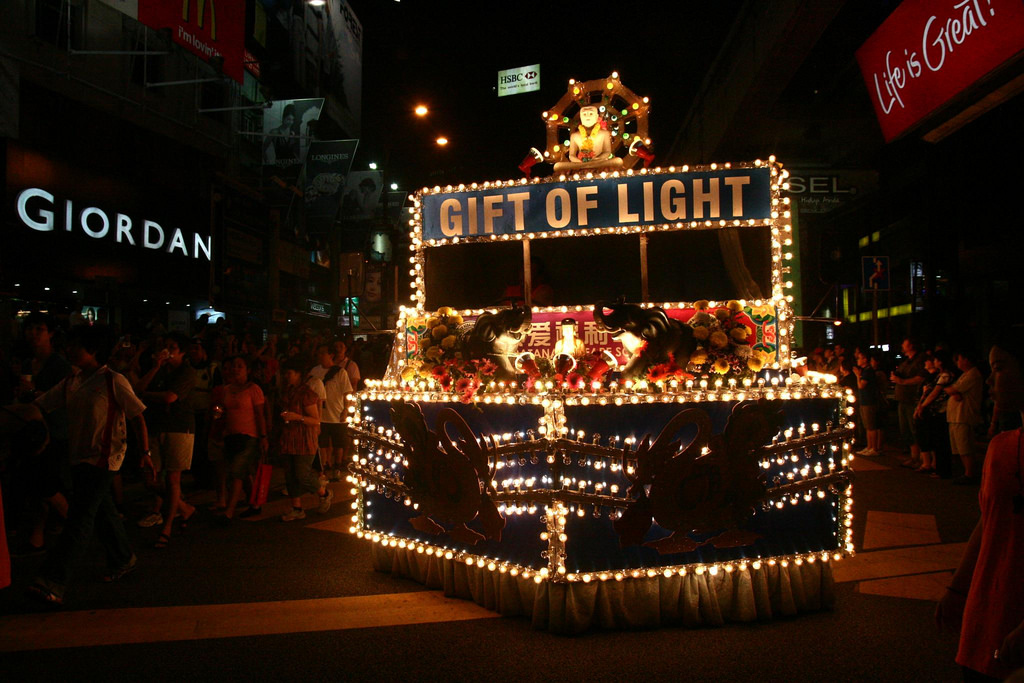
Buddhist teachings recognise the dignity and potential of the human mind which appeals to reason and freedom of thought. It urges its followers to avoid evil, do good, and purify their minds, calling for fraternity, equality, and understanding.
‘Heedfullness is the path to the deathless’, said Buddha, and he advised his followers to observe the Four Foundations of Mindfulness, or Satipatthana to overcoming sorrows and lamentation, destroy all mental and physical suffering, attain insight and knowledge, and finally, for the realisation of Nirvana.
Even now, Buddha’s messages and teachings stand firm, unaffected by time and strengthened by scientific knowledge since they were first put out into the world.
"ExpatGo welcomes and encourages comments, input, and divergent opinions. However, we kindly request that you use suitable language in your comments, and refrain from any sort of personal attack, hate speech, or disparaging rhetoric. Comments not in line with this are subject to removal from the site. "



